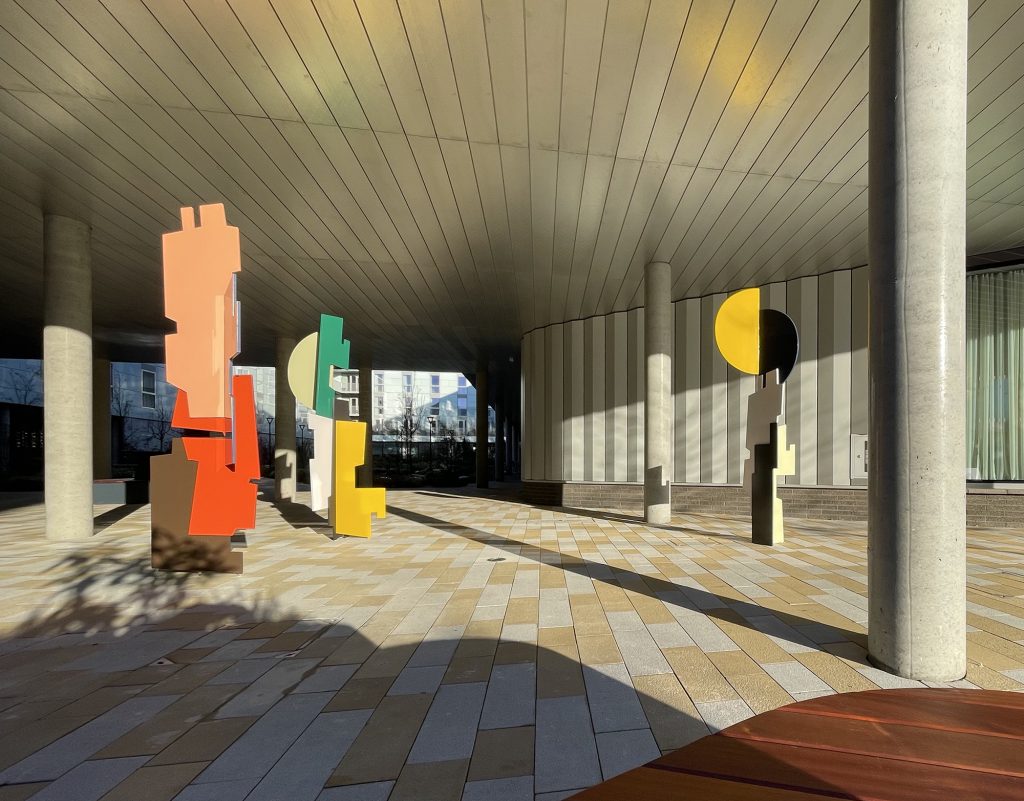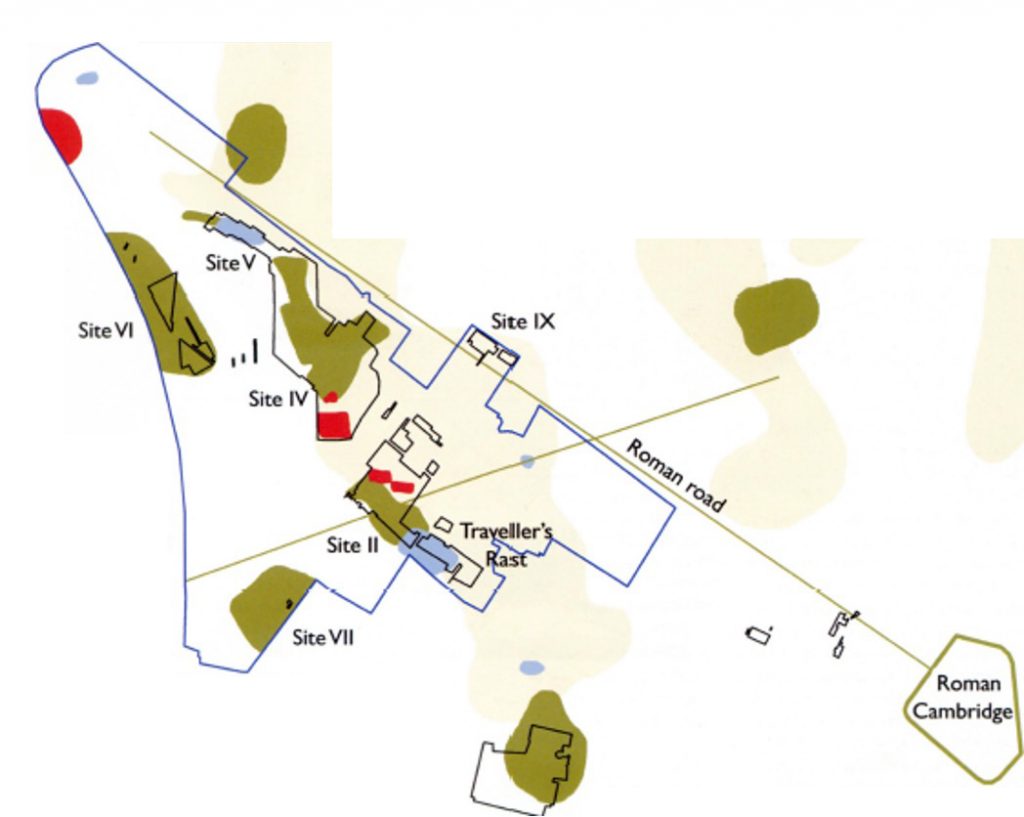Bright Shadows Point, an artwork for Eddington
‘Bright Shadows Point’, a permanent public installation by Artist Fiona Curran was commissioned by the Contemporary Art Society for the Turing Locke and Hyatt Centric Hotel. A group of three sculptural artworks are inspired by the work of the Cambridge Archaeological Unit (CAU) and the new town’s namesake, Arthur Stanley Eddington, a Professor of Astronomy and Experimental Philosophy at Cambridge University in the early part of the 20th Century.

Curran was invited to tender for the commission with a longlist of artists. On making the final three strong shortlist, she developed her response to a site-specific brief rooted in discoveries the Cambridge Archaeological Unit had made across the Eddington site over a twenty-year period, and the work of Arthur Eddington, who proved Einstein’s theory of relativity by studying a total solar eclipse and demonstrating that deflection, or bending, of light by the sun’s gravity could be measured.
Inspired by the idea of looking up to the sky – the astronomical, and the idea of looking down to the ground – the archaeological. Curran began to develop a visual response in relation to the shapes made by shadows on the land during a solar eclipse and the scars made in the ground through the archaeological digs undertaken to uncover the history of Eddington.

Through an iterative process, Curran developed a series of planar forms which were directly informed by the eclipse shadows and archaeological ditches, but also indirectly informed by the idea of mapping, extracting, sedimentation and layering; the way that histories are imprinted on the earth. Curran’s work was particularly informed by ring ditches, a specific semi-circular dig which connects points of archaeological interest, indicating where things were found and the ways in which histories overlap. Curran took further inspiration from the circular foundation of the Newel observatory which had served astronomers on the site before being removed and taken to another country.

The vibrant colouring of Curran’s shapes were selected by sampling the hues of items extracted during the archaeological digs. A comb made from bone, a brass fastening, fragments from an old stopping inn used by farmers on route to market and shards of a distinctive red pottery called Sumerian Ware. Curran worked with fabricators to cut the shapes using a water-jet cutter before they were painted.

Curran developed a series of planar forms which were directly informed by the eclipse shadows and archaeological ditches, but also indirectly informed by the idea of mapping, extracting, sedimentation and layering; the way that histories are imprinted on the earth.
Curran’s hands-on artistic process uses assemblage and collage, so she worked with a series of maquettes exploring the ways her planar forms could interlock to create upright structures and the way these interlocked planes would, themselves, create shadows on the landscape of Eddington. During this process, dRMM worked in collaboration with Curran to test different options for siting the sculptures so they could help people to navigate from Market Square into the green courtyard at the heart of the hotel.
